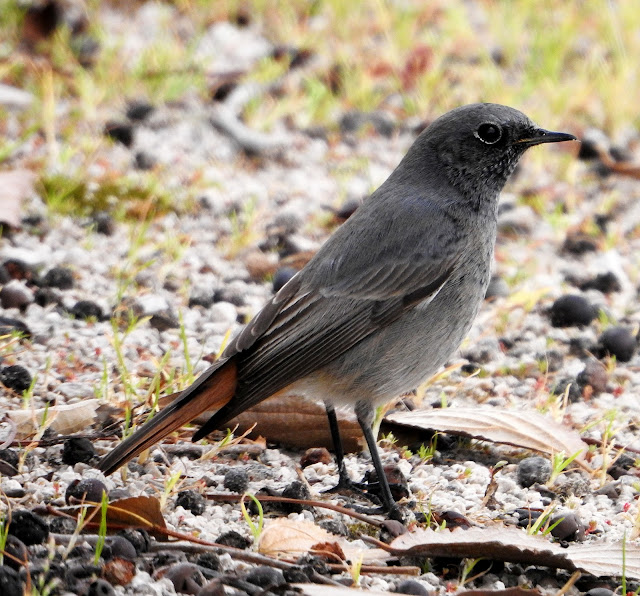The Black Redstart (Phoenicurus ochruros) is a small, charismatic passerine bird, exhibiting a blend of dark and vibrant plumage. Males are distinguished by their dark grey to black upperparts and breast, with a striking orange-red rump and tail. Females and juveniles are more subdued in color, with grey to grey-brown feathers and the same vivid tail coloration that is the hallmark of the species.
Adult males are easily identified by their dark upperparts and black breast, contrasting with the orange-red lower rump and tail. The belly and undertail may vary from blackish-grey to orange-red, depending on the subspecies. Females and juveniles are less conspicuous, with overall greyer tones and a distinctive orange-red rump and tail. The presence of pale fringes on the secondaries forms a whitish wing panel in some subspecies.
The Black Redstart has adapted remarkably to urban environments, often found nesting in crevices or holes within buildings. Originally a dweller of stony mountainous regions, it now thrives in industrial areas with similar structural features.
%201.jpg)
%201.jpg)
%202.jpg)
%201.jpg)
%202.jpg)
%201.jpg)
%201.jpg)
%201.jpg)
%202.jpg)
%201.jpg)
%201.jpg)
%201.jpg)
%201.jpg)
%202.jpg)
%203.jpg)
%204.jpg)
%201.jpg)
%202.jpg)
%201.jpg)
%201.jpg)
%202.jpg)






 1.jpg)






